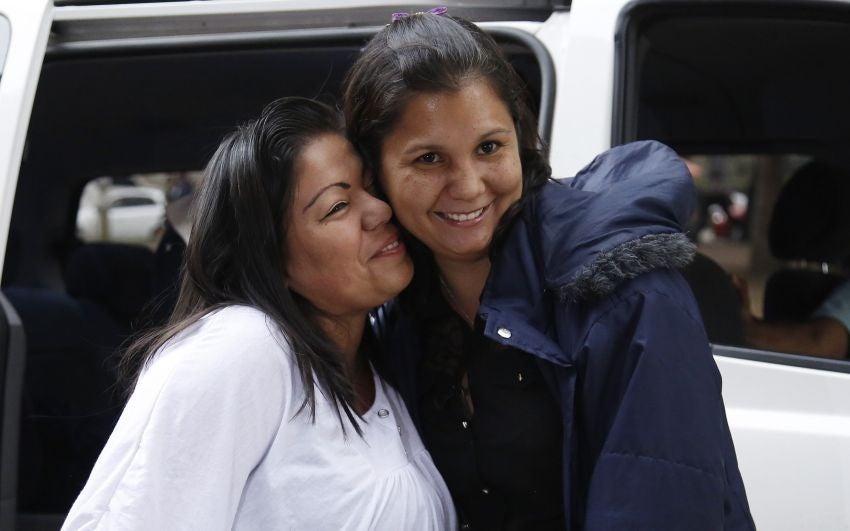Colombian sisters separated by 1985 avalanche are reunited
Armero was buried beneath 10 metres of earth, mud and rock when part of the Nevado del Ruiz volcano collapsed following an eruption

Your support helps us to tell the story
From reproductive rights to climate change to Big Tech, The Independent is on the ground when the story is developing. Whether it's investigating the financials of Elon Musk's pro-Trump PAC or producing our latest documentary, 'The A Word', which shines a light on the American women fighting for reproductive rights, we know how important it is to parse out the facts from the messaging.
At such a critical moment in US history, we need reporters on the ground. Your donation allows us to keep sending journalists to speak to both sides of the story.
The Independent is trusted by Americans across the entire political spectrum. And unlike many other quality news outlets, we choose not to lock Americans out of our reporting and analysis with paywalls. We believe quality journalism should be available to everyone, paid for by those who can afford it.
Your support makes all the difference.Two sisters separated 30 years ago when an avalanche tore through their Colombian town have finally been reunited thanks to a foundation dedicated to the tragedy.
Jacqueline and Lorena Sanchez Vasquez had each long assumed the other was dead after the avalanche destroyed their home in the small town of Armero on 13 November 1985. The city was buried beneath 10 metres of earth, mud and rock when part of the Nevado del Ruiz volcano collapsed following an eruption.
The disaster killed 20,000 people and the two girls, then aged nine and three, were adopted by separate families after their parents were declared missing.
Lorena, who says that she remembers little of the disaster, decided 12 months ago to contact the Armando Armero Foundation, which has campaigned for greater recognition of the disaster and for the survivors.
It was in November last year that Jacqueline saw a video made by Lorena for the foundation after it was posted on Facebook. She says that she immediately recognised her long-lost sister and then requested a DNA test to confirm the match.
“I was always researching my adoption process and in November last year I went to Armero to take my DNA sample. Soon I was informed of the existence of a girl with the same name that could be my sister,” she said.
The two met for the first time in three decades on Thursday.
Holding hands and smiling at a press conference, they said that they had relived the past and identified traits in their mother that they now claimed each other possessed. Both mothers themselves, they introduced their children to their new cousins.
“There are nerves because you do not know whether the other person will feel rejection. There are mixed feelings,” said Lorena. “You wonder, ‘Will she still love me?’ It’s difficult to explain at this moment.”
She urged others to keep looking for relatives who may have survived. “Never lose hope,” she said. “We waited 30 years – it is possible.”
Despite renewed appeals by the foundation, neither sister knows what happened to their parents. It is likely that they were killed in the disaster, which only a third of the town’s population survived.
The foundation is run by Francisco Gonzalez, whose father died in the tragedy. He has spent the last 10 years trying to preserve the memory of what happened and tracking down the relatives of those who survived.
The disaster was the second most deadly volcanic eruption of the 20th century. Because of the remote location and the fact that it occurred at the same time as a major earthquake in Mexico City, the relief effort was limited.
When rescue workers did eventually reach the site, it was found that many of the dead had succumbed to their injuries hours after the avalanche.
A lack of specialist equipment meant that others then died after days trapped under the rubble.
Join our commenting forum
Join thought-provoking conversations, follow other Independent readers and see their replies
Comments